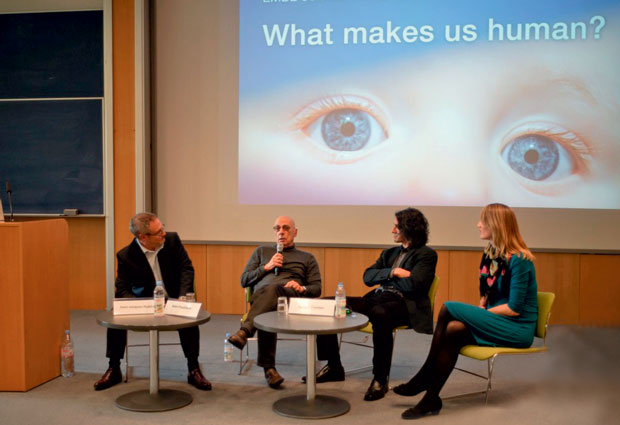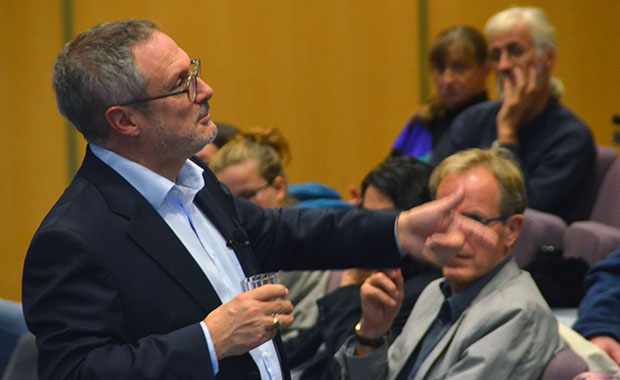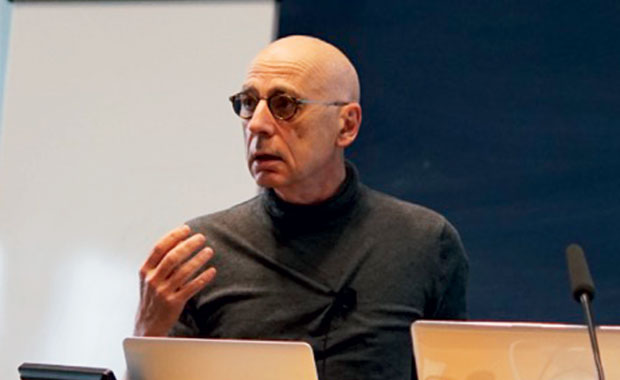
Being human beings
If you are reading this article, there is little doubt that you are human. We can do amazing things such as stand on two feet, manipulate objects with our hands and understand complex language. But what is it that makes us quintessentially Homo sapiens? Highlights from the What makes us human? symposium at EMBL Heidelberg.

By Giorgia Guglielmi and Heena Khatter
Only children
Ever get that feeling you are all alone? Well, for around 40 000 years Homo sapiens have been the only living species belonging to the genus Homo. “But the situation we have today, with only one species, is exceptional”, explained Jean-Jacques Hublin, a Director at the Max Planck Institute for Evolutionary Anthropology. Fossil evidence exists of more than 25 species of hominids – many of which co-existed and even interbred – including the astonishing recent discovery of Homo naledi in a South African cave, who displays both primitive and human-like features. “Our evolutionary lineage looks more like a bush rather than a straight line: studying the timing of development and maturation in different hominids can help us to understand how they coped with different forms of social organisation and adapted to environmental challenges,” added Hublin.

BBQ masters
Fire did not only keep predators away, but it also made cooking possible. “If we consumed raw food, we would need to eat for around 10 to 12 hours each day,” argued developmental biologist Alain Prochiantz of the Collège de France. The invention of fire correlated with an increase in brain size, and scientists believe that this might have been the turning point in our evolutionary history. We all experience the power of our big brain on a daily basis when we reason, judge, compute, problem-solve, and use and understand complex language – it turns out that we can do pretty remarkable things with those 1300 cubic centimeters! Prochiantz argued that by eating cooked meat, early humans could not only gain a lot of energy but also easily digest and absorb essential nutrients to feed our grey matter.

Collaborative creativity
For the genus Homo, evolution seems to have favoured teamwork over selfish motives. “Whether it was eluding predators, defeating competitors, making and sharing stone tools, controlling fire, telling stories or contending with shifts in climate, our ancestors collaborated to deal with the challenges the world threw at them,” explained Agustín Fuentes from the University of Notre Dame. “This baseline of creative cooperation, the ability to think, communicate, and collaborate with increasing prowess, transformed us into the beings that invented the technologies that support large-scale societies and ultimately states.” Each of these features was acquired at different times during our evolutionary history, added Hublin. “While there are many things that make us human, there is no way of knowing how old the oldest human is.”


